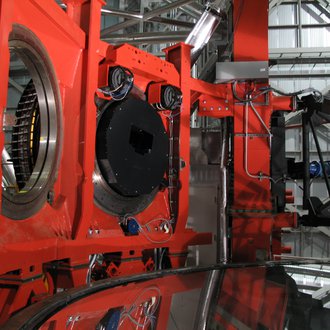AGWs for the LBT
As part of the AIP contribution to the LBT project the AIP designed and built four Acquisition, Guiding, and Wavefront sensing units (AGW units) for the telescope. They have been delivered and installed at the telescope between 2007 and 2011. Two of these units support the LUCIFER instrument, the two others are foreseen for the PEPSI polarimeters, and are currently used in commissioning the various foci of the telescope. In particular they were used for the direct gregorian focal station to prepare the telescope for the arrival of the Multi-Object Double Spectrograph (MODS). Additionally, two similar units went into the Permanent Focus Units (PFUs) for PEPSI. They have been installed in 2013.
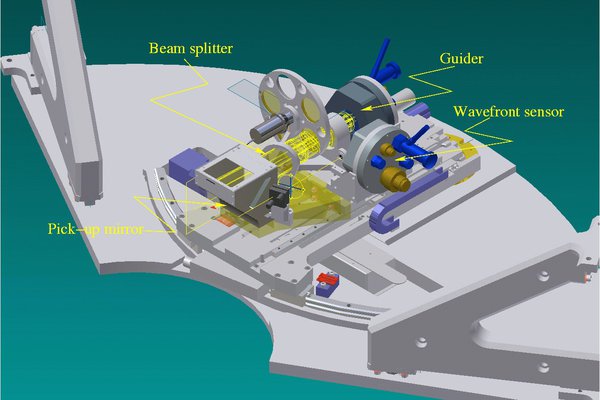
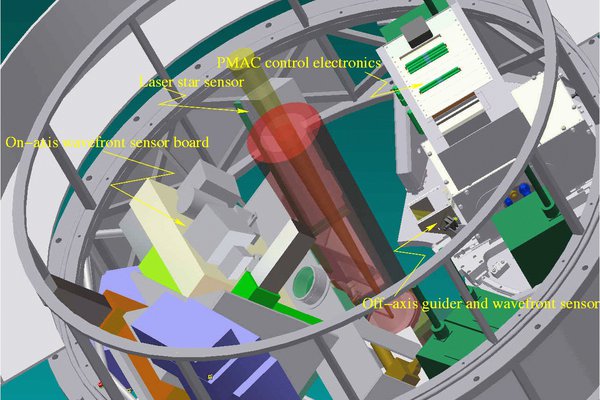
Each of the AGW units consists of a guide camera and a wavefront sensing camera which can be moved around in the focal plane of the telescope to find a suitable reference star. The guiding camera is responsible for compensating tracking errors of the telescope, while the wavefront sensor uses the red part of the light from the guide star to analyze the shape and alignment of the main mirrors. In the wavefront sensor, a tiny lenslet array splits the light from the different parts of the main mirror into separate channels. Comparing the actual image with a calibration image allows the detection of slight deviation of the perfect mirror shape and focus. The 158 actuators on the back side of the main mirror are then engaged to compensate these abberations (active optics).
The first two units built received an on-axis unit from our colleagues in Italy (Arcetri observatory) for performing real-time measurements of the incoming wavefront. This makes the adaptive optics sensor for the telescope, which, in turn, steers the 672 actuators on the back of the secondary mirror (91 cm diameter). This unit observes the light and the wavefront from a star close (closer than approximately 20'') to the scientific target in the sky using a so called ''pyramid sensor''. At a servo frequency of several hundred Hertz, diffraction limited images in near-IR are within the reach of the instrument.
Images of the construction (2003):
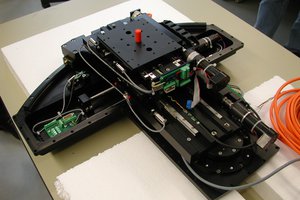
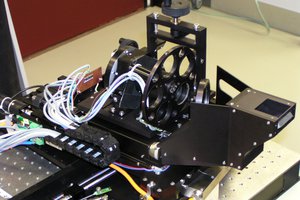
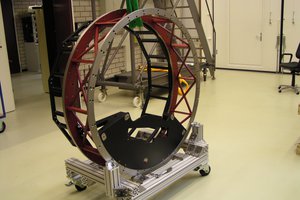
Delivery and installation at the telescope (2007 - 2011):
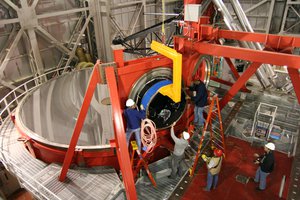
The first AGW unit (#3) is mounted at LBT.
Credit: AIP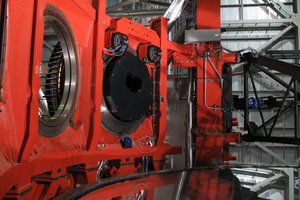
The unit AGW#3 at bent gregorian focus of the LBT.
Credit: AIP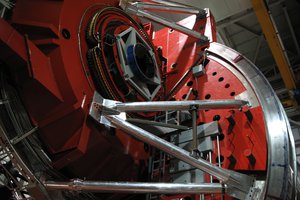
AGW#4 at left direct gregorian focus.
Credit: AIP